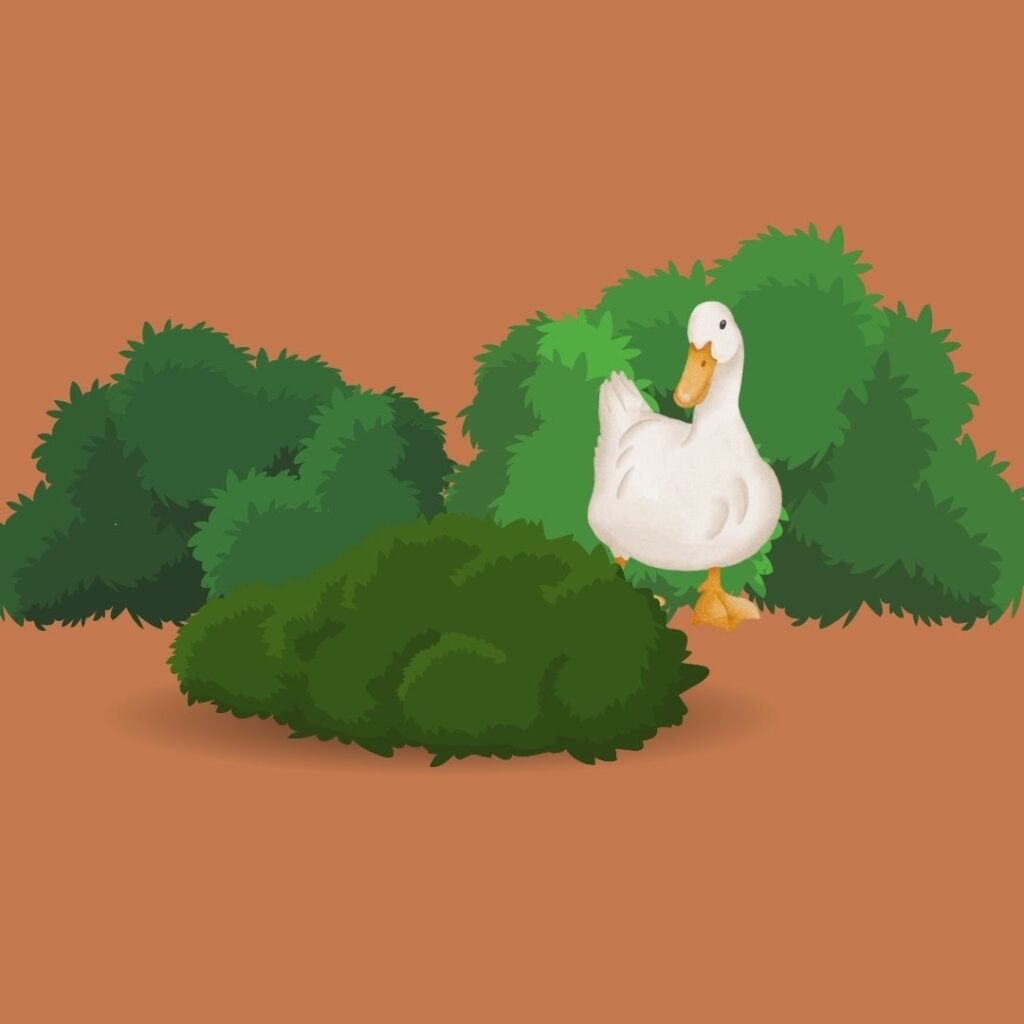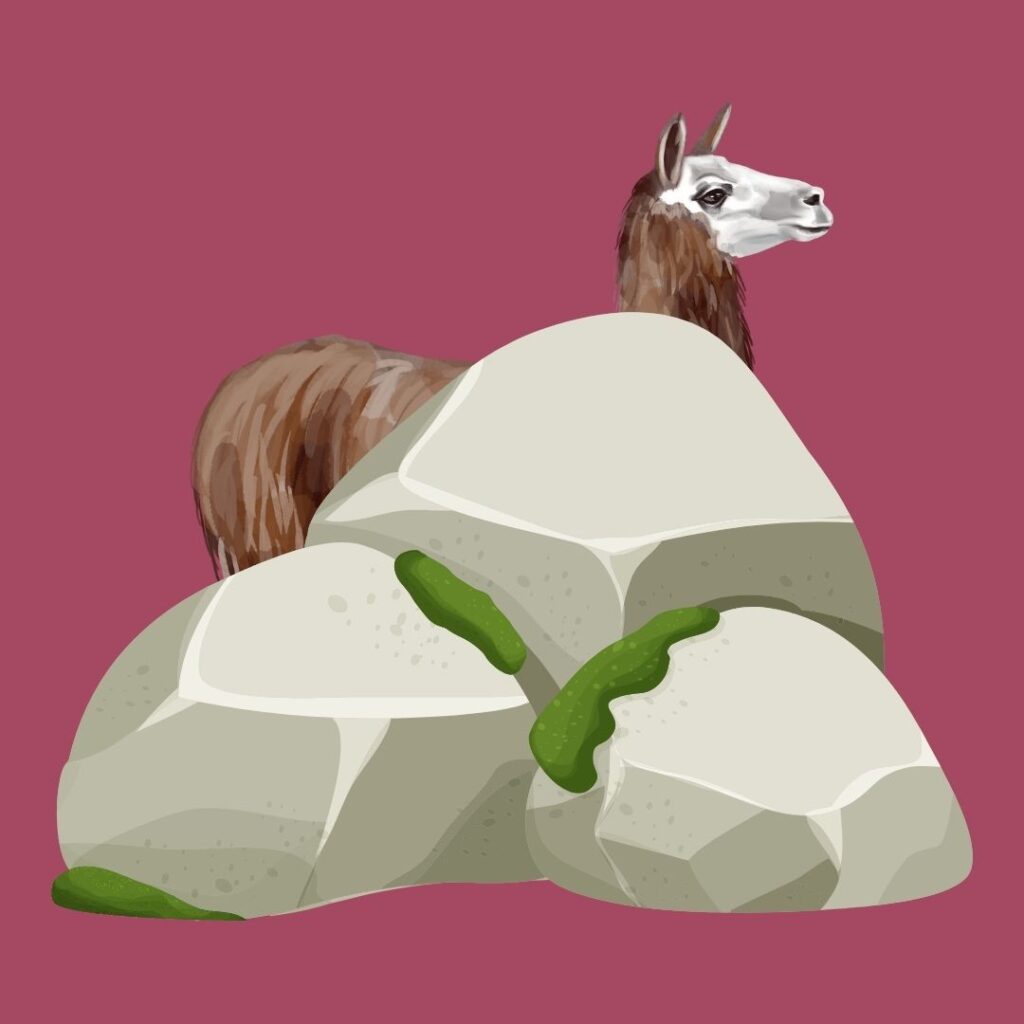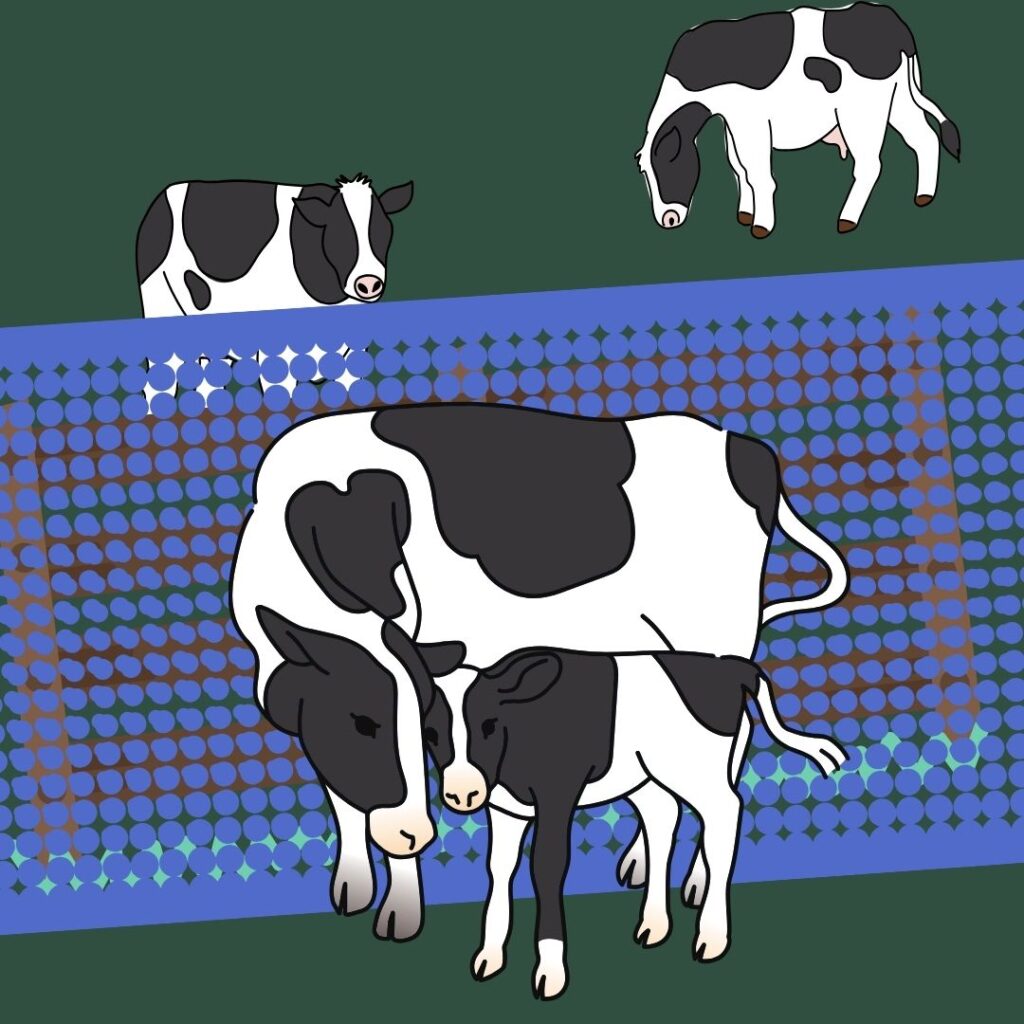
Non-Compassionate Sources
We at The Open Sanctuary Project disavow animal experimentation and any “use” of animals for human purposes. Because compassionate studies on valuing the personality, intelligence, and unique attributes of many nonhuman animals are rare, in this resource, we draw from existing sources that may be non-compassionate. Still, we may use the information we find to improve the lives of residents. We strive towards a future when compassionate, non-exploitive, and non-invasive research is the norm. In the meantime, we will work with what we have to help sanctuaries help animals as effectively as possible. You can read a little bit more about our non-compassionate source policy here.
Now You See Me, Now You Don’t
Welcome to another Science For Sanctuaries Resource! If you are a caregiver, you have likely found yourself brainstorming creative ways to improve the lives of all your sanctuary residents. In this resource, we will review what is known about how the presence of visual barriers and hiding places may affect residents and how a better understanding of this could help you provide better care. Are visual barriers helpful? Are there issues that arise from having visual barriers? Does the type of barrier matter? Can it affect behavior or stress levels? Luckily, numerous studies on this topic have covered a range of species, from tigers to gorillas to chickens!1,2,3 As a note, we didn’t find studies on the topic of camelids or equines, so they are not included in this resource. Many studies indicate that providing visual barriers/hiding places may promote positive welfare for various nonhuman animal species.1,2,3,4 In this resource, we will briefly examine the current research available and whether the findings have application in sanctuary settings.
Considering Natural Behavior
When building, designing, or adding elements to a resident’s living spaceThe indoor or outdoor area where an animal resident lives, eats, and rests., it’s important to consider the species (as well as the individual) and which elements may encourage natural behaviors. The ability to perform natural behavior can promote positive welfare (though some natural behaviors can indeed have a negative effect in certain contexts, such as fighting).5,6,7,8 In contrast, a lack of opportunity to perform natural behaviors has been shown to contribute to the development of abnormal behaviors, psychological distress, and physical health issues.9,10,11 Keeping this in mind, ensuring that residents have a place to “hide” or simply remove themselves from the view of others would, in theory, improve welfare. But let’s see what the research has to say:
The Research
Generally, we do a mini meta-analysis of the existing research available on the topic in this series. (A meta-analysis is a paper that tries to find all the available research on a topic to ascertain what is known or not about the subject.) This time, someone beat us to it! In 2022, a meta-analysis was published on existing studies examining how visual barriers or hiding places affected goats, sheep, pigs, chickens, turkeys, ducks, geese, rabbits, fishes, foxes, and a few additional species.5 They examined hundreds of studies and found 151 that met their criteria! It is important to note that half the studies they found specifically researched the use of hiding places in animals that were ready to lay eggs or give birth through an agricultural lens. Let’s take a look at some of the outcomes of their analysis:
- Overall, the provision of hiding places had positive outcomes in 74% of the studies, 6% had negative outcomes, and 19% of outcomes were found to be either neutral or inconclusive in their results.
- Several studies found that the presence of hiding spaces decreased confrontationalBehaviors such as chasing, cornering, biting, kicking, problematic mounting, or otherwise engaging in consistent behavior that may cause mental or physical discomfort or injury to another individual, or using these behaviors to block an individual's access to resources such as food, water, shade, shelter, or other residents. behaviors.
- A few studies found an increase in confrontational behaviors thought to be due to competition over accessing the hiding space, indicating its value, or because it limited the rest of the area the group had to use.
- A number of studies also found that animals given hiding space had fewer injuries. One found the opposite due to competition over hiding spaces in catfish.
- There were 14 outcomes related to the effect of hiding spaces on the presence of abnormal behaviors. In all cases, the abnormal behaviors decreased when animals were provided with hiding spaces.
- Among a number of the studies, they found outcomes related to affective states (emotions), 23 reporting positive affective states (emotions), 4 negative affective states, and 8 neutral affective states.
While the above findings are interesting, what information does this really provide sanctuaries about how residents might do with hiding places available? Since this meta-analysis included a number of different species, how does this data break down into useful information for farmed animalA species or specific breed of animal that is raised by humans for the use of their bodies or what comes from their bodies. sanctuaries? Let’s dig a little deeper into the details:
Chickens

Notable Information For Sanctuaries: Providing a variety of covered areas and visual barriers is generally a positive step for chicken residents and may encourage them to use more of their living area, rest, and preen more, depending on the type of visual barrier provided. It also creates an interesting visual environment! Overhead coverage is important for a sense of safety and also protection from HPAI.
Cows
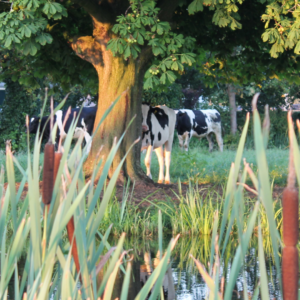
Notable Information For Sanctuaries: Unfortunately, we couldn’t glean much from this research. However, it can be important to ensure pregnant residents and those with young calves have safe spaces that may include visual barriers and even separate living arrangements. Additionally, it can be beneficial in reducing confrontations if residents can remove themselves from sight of another individual.
Ducks
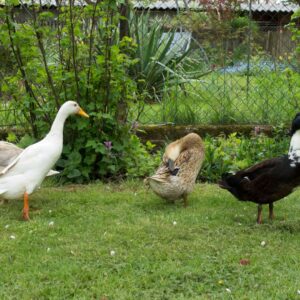
Notable Information For Sanctuaries: Residents may feel safer outside when given vegetation or other cover sources, such as a shade material spread across the top of their outdoor living spaces. Visual barriers are highly recommended to reduce stress and confrontations, especially during mating seasons. This can protect residents from sustaining injuries and assault. Overhead coverage is important for a sense of safety and also protection from HPAI.
Fishes
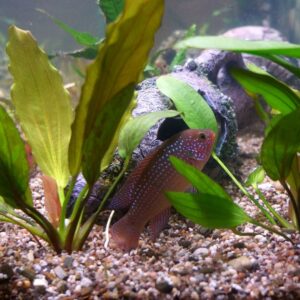
Notable Information For Sanctuaries: Generally speaking, providing fish residents with multiple options for hiding is beneficial. Confrontations may occur in overcrowded spaces or those with few barriers for a larger group size. It is also important to research the type of fishes you are caring for to provide the best type of barriers.
Goats

Notable Information For Sanctuaries: Generally speaking, providing goat residents with various visual barriers that include elevated spaces, where appropriate, can reduce conflict among residents, and mothers with kids in the herd need spaces to provide cover for their young. It also creates a more dynamic living space.
Pigs
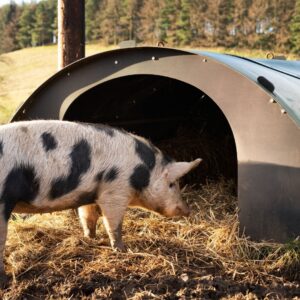
Notable Information For Sanctuaries: Given the opportunity, pig residents are likely to use visual barriers and separate themselves for some privacy. It is imperative to have enough space for them to have multiple “hides” so everyone can access visual barriers. Placement of the barriers may have some effect as well. However, given the studies focus on extensive farming systems, some of the findings may be less useful for sanctuaries so long as everyone has enough space to prevent confrontations.
Quail
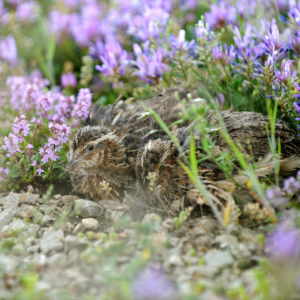
Notable Information For Sanctuaries: Given the opportunity, quail residents will use visual barriers as it gives them a sense of security. The importance of this is highlighted in the fact that hens given hiding spaces during nesting will have chicks who are less emotionally reactive. Meaning they are less likely to be stressed and scared. Of course, sanctuaries don’t breed residents, but this study highlights how powerful it is to provide quail residents with opportunities to hide. Overhead coverage is important for a sense of safety and also protection from HPAI.
Rabbits

Notable Information For Sanctuaries: Wild rabbits live in dens and are at risk of predators from the sky and ground. They often use vegetation or their burrows to hide from predators. It is important to provide several options for rabbitUnless explicitly mentioned, we are referring to domesticated rabbit breeds, not wild rabbits, who may have unique needs not covered by this resource. residents to have cover. They may have different preferences, so offering tunnels, houses, vegetation, and other types of cover will give them a choice of where they feel most secure.
Sheep

Notable Information For Sanctuaries: Sheep may value more space over access to barriers, but as long as they have adequate space, providing barriers is still recommended so residents can hide away from visitors and other residents.
Turkeys

Notable Information For Sanctuaries: Offer turkeyUnless explicitly mentioned, we are referring to domesticated turkey breeds, not wild turkeys, who may have unique needs not covered by this resource. residents opportunities to seek privacy from their peers. Doing so can reduce confrontations and injuries. It also creates a richer environment and offers more choices. Overhead coverage is important for a sense of safety and also protection from HPAI.
It Isn’t Just About The Barriers
Although the research indicates that providing visual barriers and hiding places for residents can help them avoid conflict, rest easier, and leave otherwise uncomfortable situations, it isn’t just the barrier that provides benefits. It’s about choice. Regarding barriers, whether to stay inside or go outside, what to eat, who to interact with -or not-, choice and autonomyThe ability for individuals to have access to free movement, appropriate food, and the ability to reasonably avoid situations they wish to avoid. play a big role in how a resident may feel about their environment. A lack of control contributes to stress. We will look more closely at how choice makes a difference in the lives of residents in a future resource.
Limitations Of These Studies

- Many of these studies focus on the behavior of pregnant or nesting individuals. The results, therefore, won’t necessarily be true of nonpregnant individuals or individuals nesting.
- All of these studies come from a non-compassionate agricultural perspective. The environments and stressors on the animals involved in the studies are unlikely to simulate their care in sanctuary settings.
- There are only one or two studies or inconclusive results in many species.
Key Takeaways

While there were many different types of studies observing a number of species, the overall findings suggest that the provision of visual barriers has the potential to:
- Decrease confrontational behaviors (IF enough visual barriers are provided to prevent competition between residents and these barriers don’t create a cramped living area)
- Improve social relationships
- Decrease abnormal behaviors
- Lower stress levels
- Increase resting behaviors
- Increase positive emotive states (emotions) in residents.
- Decrease injuries
- Increase exploration of living space
- Confrontations may occur due to limited space or competition over hiding areas/visual barriers.
- Sometimes no difference is noted.
Practical Applications For Sanctuaries
Use Caution
We cannot stress enough the importance of considering each individual, their history, temperament, social relationships, and health and paying close attention to their responses to any newly introduced enrichment. We do not know the full effects different visual barriers may have on individual residents. What feels safe and secure for one may be less so for another.
In a sanctuary setting, resident well-being is a top priority. Providing visual barriers and hiding places allows residents to be seen or seek private time. Some residents may prefer to be hidden away when tours or volunteer groups are onsite, while others may enjoy and seek out interaction. Visual barriers can also provide more timid residents rest from excitable, playful, or confrontational residents sharing the same living space.

Let’s break that last part down into list form! The provision of visual barriers allows residents more choice and autonomy by giving them the following:
- The ability to remove themselves from the sight of visitors or stressful human activity
- A quiet place for a nice nap
- Avoidance of overly rambunctious or confrontational residents
- Alone time for individuals who prefer it
- A sense of safety from predators
- In the case of overhead visual barriers, increased use of living space due to protection from predators
- A more diverse and enriching living space
- By providing pregnant residents the ability to perform natural behaviors in seeking solitude and safety before, during, and after giving birth (though careful observations should be made during this time and the resident separated when appropriate.)
- Perhaps most importantly, visual barriers provide residents with choices.
Close Observation Is Vital
When providing visual barriers or hiding areas, caregivers must be on the lookout for any changes in the social group, especially for competition for hiding areas that may be prized. It is also important to remember that you should have eyes on every individual every day, so checking these less visible areas is important to ensure residents’ well-being. Noting whether residents use the barrier, how often, and if there is a pattern of when and who uses it can be helpful in making any necessary adjustments. Trying different types of barriers and hiding areas to see what is preferred is a great way to learn more about what your residents want.
Types Of Visual Barriers
There are many ways to provide visual barriers and hiding spots. What this looks like will depend greatly on the species, the group dynamics, space, and the individual. Let’s look at some examples of barriers.
- Straw bales
- Brush
- Trees
- Tall grass/bushes
- Shade screen
- Plywood partitions
- Three-sided structures
- Large rocks
- Sand or dirt mounds
- Elevated furniture
- Boxes, tubes/tunnels
- Stumps
- Individual resting boxes or houses
Enough For Everyone!
When providing visual barriers, it is absolutely essential that you pay attention to how residents interact with the barrier and each other after it is introduced. A single visual barrier is highly valued and can increase conflict if many residents want to use it. For this reason, adding multiple opportunities for residents to utilize visual barriers can be helpful.
We hope you find these bite-sized science resources helpful at your sanctuary. These resources provide sound scientific information that may have a practical application in sanctuaries. We hope you’ll stay tuned for more Science For Sanctuaries. If you haven’t yet, check out our resource exploring the research on lavender and horses. In the meantime, let us know if you have any experience with music for pig residents or other resident species. We love hearing from you and will do our best to answer any questions! Also, please contact us if you have any questions or concerns. It is important that we constantly improve our knowledge base with the most accurate, compassionate information possible.
SOURCES
- Case Study: Visual Barriers Reduce Pacing In Captive Tigers | Zoobiology (Non-Compassionate Source)
- Group Differences In Captive Gorillas’ Reaction To Large Crowds | Applied Animal Behaviour Science (Non-Compassionate Source)
- Enhancing Their Quality Of Life: Environmental Enrichment For Poultry | Poultry (Non-Compassionate Source)
- Effects Of The Provision Of A Hiding Box Or Shelf On The Behaviour And Faecal Glucocorticoid Metabolites Of Bold And Shy Cats Housed In Single Cages | Applied Animal Behaviour Science (Non-Compassionate Source)
- The Impact Of Providing Hiding Spaces To Farmed AnimalsA species or specific breed of animal that is raised by humans for the use of their bodies or what comes from their bodies.: A Scoping Review | Plos One (Non-Compassionate Source)
- Behavioral Diversity As A Potential Indicator Of Positive Animal WelfarePractices and policies that promote the well-being of nonhuman animals, specifically their health and comfort. | Animals (Non-Compassionate Source)
- Assessing the Importance of Natural Behavior for Animal Welfare | Journal Of Agricultural And Environmental Ethics (Non-Compassionate Source)
- The Natural Behavior Debate: Two Conceptions of Animal Welfare | Journey Of Applied Animal Welfare Science (Non-Compassionate Source)
- Risk Factors For Stereotypic Behaviour In Captive Ungulates | Proceedings Of The Royal Society Biological Sciences (Non-Compassionate Source)
- Pacing Stereotypies In Laboratory Rhesus Macaques: Implications For Animal Welfare And The Validity Of Neuroscientific Findings | Neuroscience And Biobehavioral Reviews (Non-Compassionate Source)
- Stereotypic Behaviour in the Stabled Horse: Causes, Effects and Prevention without Compromising Horse Welfare | The Welfare Of Horses (Non-Compassionate Source)
- Veterinary Participation In Large-scale Bird Rescue Operations | Julie Burge, DVM
- Turkey Farming: Welfare And HusbandryThe ongoing care of an animal. Sometimes husbandry practices include references to breeding animals. Issues | African Journal Of Agricultural Research (Non-Compassionate Source)
- Comparing Different Environmental Enrichments For Improving The Welfare And Walking Ability Of Male Turkeys | Plos One (Non-Compassionate Source)
Non-Compassionate Source?
If a source includes the (Non-Compassionate Source) tag, it means that we do not endorse that particular source’s views about animals, even if some of their insights are valuable from a care perspective. See a more detailed explanation here.




